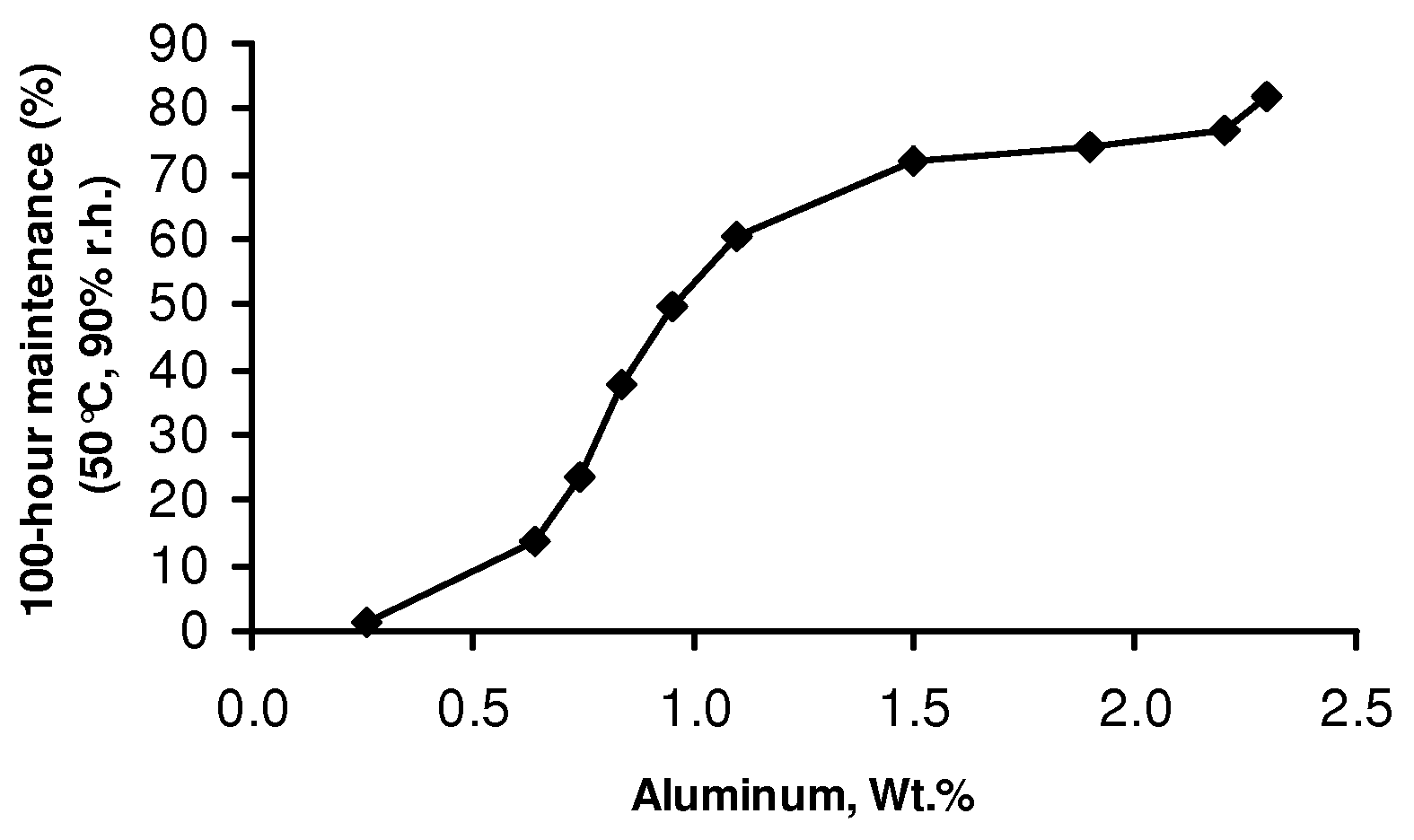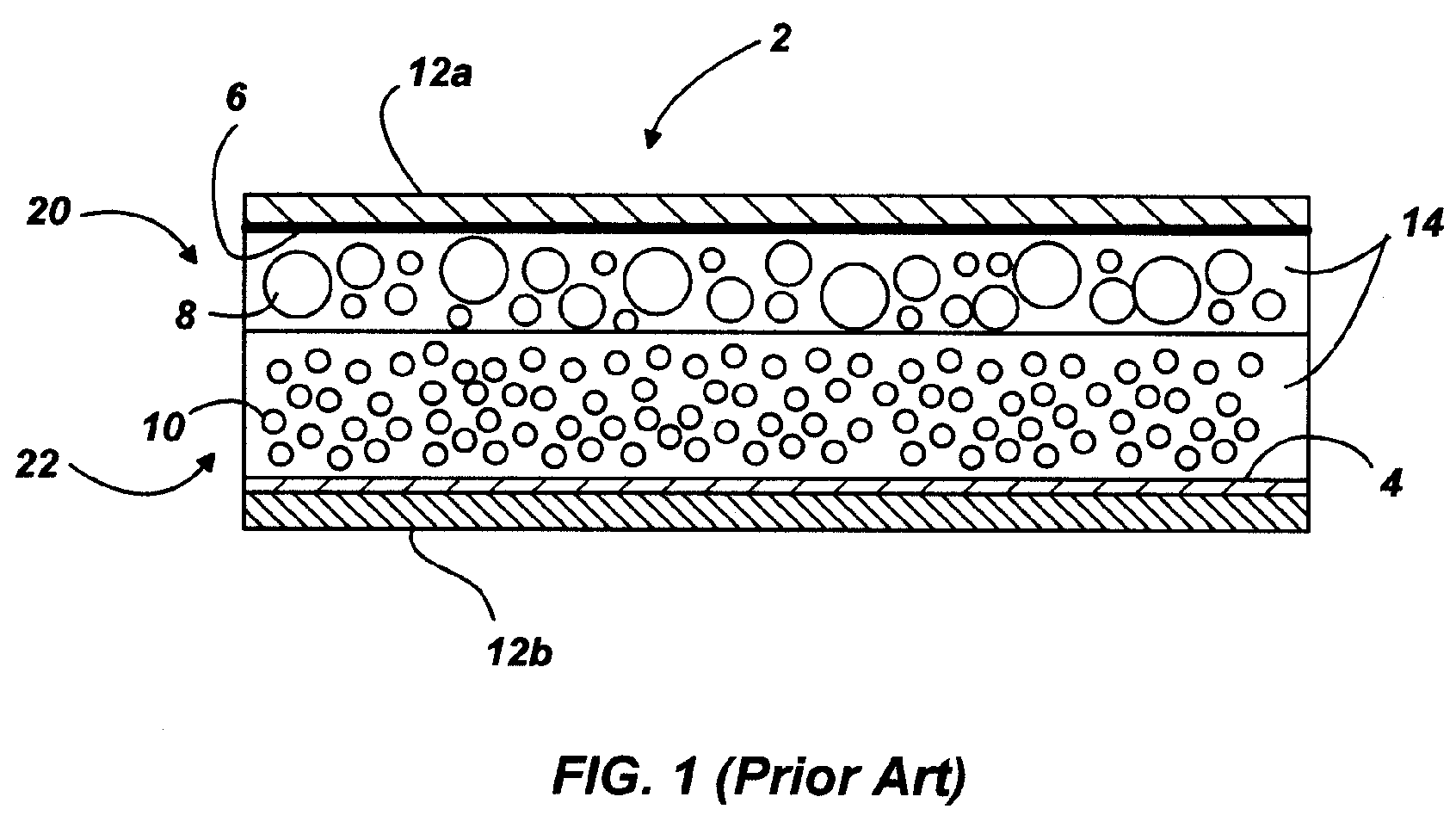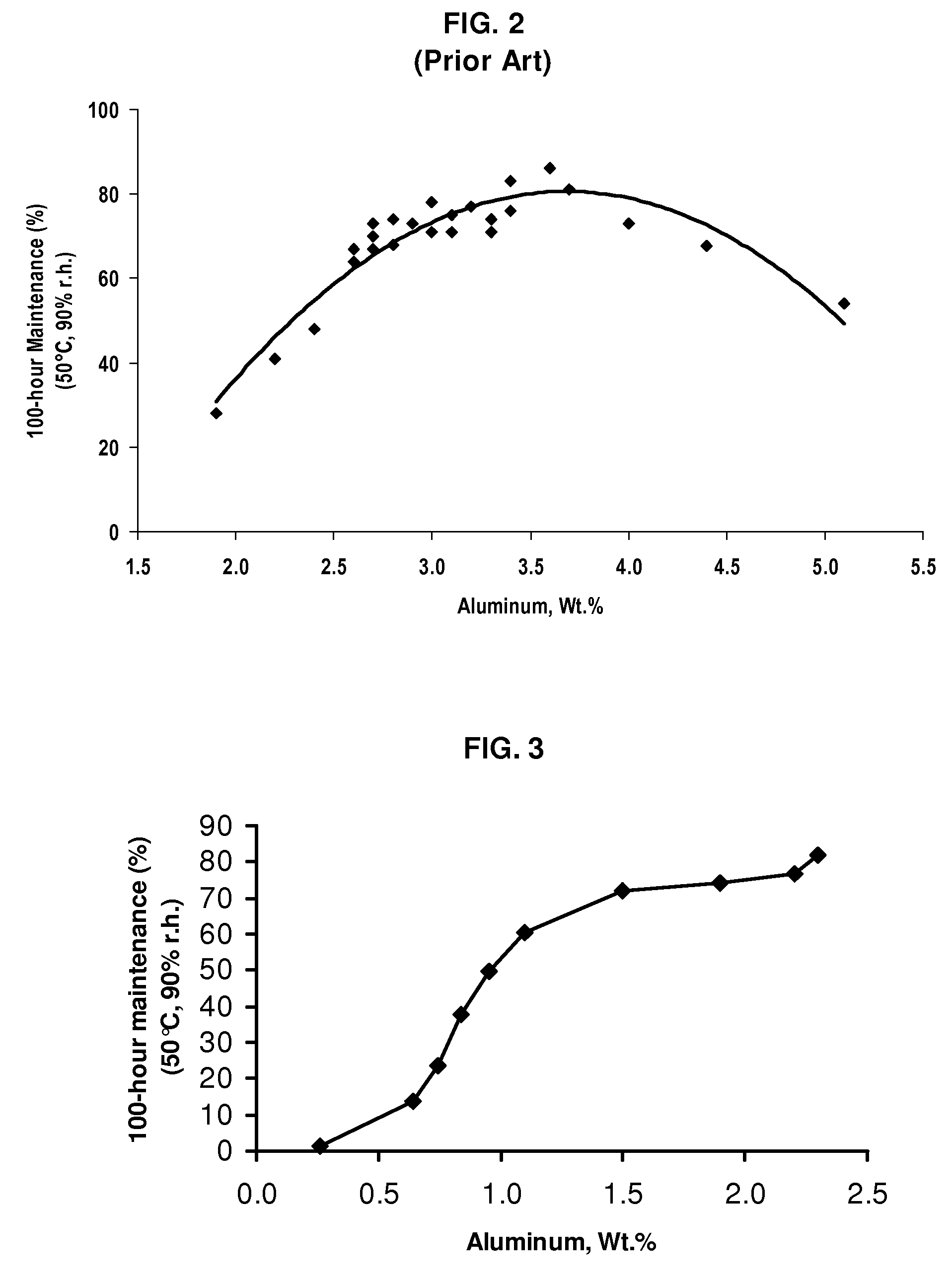Moisture-resistant Electroluminescent Phosphor with High Initial Brightness and Method of Making
- Summary
- Abstract
- Description
- Claims
- Application Information
AI Technical Summary
Benefits of technology
Problems solved by technology
Method used
Image
Examples
example 1
[0029]About 2.0 kilograms of a green-emitting ZnS:Cu electroluminescent phosphor (Type 729, OSRAM SYLVANIA Products Inc., Towanda, Pa.) is charged into a vibrated fluidized bed reactor for ALD coating. The fluidized bed reactor is a stainless steel column with a metal disc as the gas distributor. High-purity nitrogen is the fluidizing gas. The entire reactor is surrounded by a clamshell-type furnace and reactor temperature is maintained at 450 K. Trimethylaluminum (TMA) and deionized water are used as precursors and the reaction is split into two self-limiting half-reactions to deposit an aluminum oxyhydroxide coating. A series of pneumatically activated valves control the automatic and sequential dosing of precursors during the coating cycles. Both precursors are delivered via their vapor pressures and the system is evacuated and kept at pressure of 1.0 Torr at all times. After each precursor dose, the system is flushed with nitrogen to eliminate unreacted species as well as any me...
example 2
[0030]In this example, 600 grams of the ALD-coated EL phosphor prepared in Example 1 were charged into a 4.1 cm inside diameter quartz tube with a total length of 60 cm. The bed of phosphor particles in reactor was fluidized by passing the nitrogen gas with the TMA precursor through the 5 μm pore size metal frit in the bottom of the reactor. Water vapor entrained in a nitrogen gas stream was introduced into reactor through a hollow agitator and injected into the fluidized bed of particles through a porous metal sparger located in the agitator. Both vaporized TMA and water vapor were flowed into the reactor simultaneously and continuously until the end of coating process. The TMA and water bubblers were kept at 41 ° C. and 74 °C., respectively. The flow rates of the nitrogen carrier gas through the TMA and water bubblers were controlled at 1.5 liter / min and 2.0 liter / min, respectively. In addition, the temperature of the reactor was maintained at 450 K by furnace elements, which surr...
example 3
[0031]The phosphor in this example was prepared as in Example 2, except that the CVD coating time was extended to 4.0 hours. The collected samples from this example include CVD #6 (2.5 hours), CVD #7 (3 hours), CVD #8 (3.5 hours), and CVD #9 (4 hours).
[0032]A control sample of a conventional CVD-coated phosphor made from the same uncoated phosphor used in Example 1 was tested to compare with ALD / CVD-coated examples. This phosphor was encapsulated by introducing both vaporized TMA and water vapor precursors simultaneously into a fluidized bed reactor, which was maintained at atmospheric pressure and 450 K during the CVD coating process. The coating process was continued until the amount of aluminum deposited reached 3.8 wt. % which represents in the case of the conventional CVD method the coating thickness for the optimal combination of retained initial brightness and high moisture resistance (FIG. 2). As an additional control, an ALD-coated phosphor was made with 800 ALD deposition ...
PUM
| Property | Measurement | Unit |
|---|---|---|
| Temperature | aaaaa | aaaaa |
| Fraction | aaaaa | aaaaa |
| Fraction | aaaaa | aaaaa |
Abstract
Description
Claims
Application Information
 Login to View More
Login to View More - R&D
- Intellectual Property
- Life Sciences
- Materials
- Tech Scout
- Unparalleled Data Quality
- Higher Quality Content
- 60% Fewer Hallucinations
Browse by: Latest US Patents, China's latest patents, Technical Efficacy Thesaurus, Application Domain, Technology Topic, Popular Technical Reports.
© 2025 PatSnap. All rights reserved.Legal|Privacy policy|Modern Slavery Act Transparency Statement|Sitemap|About US| Contact US: help@patsnap.com



